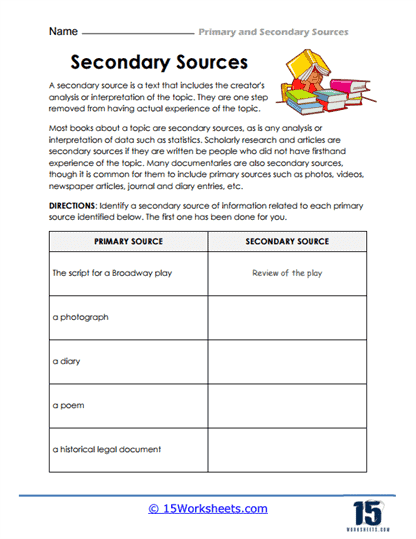Follow The Example

Worksheet Description
This educational worksheet is designed to help students distinguish between primary and secondary sources within research contexts. The worksheet’s title, “Secondary Sources,” is prominently displayed at the top, followed by a concise definition that explains what a secondary source is and how it differs from a primary source. It clarifies that secondary sources include the creator’s analysis or interpretation of a topic, placing them one step removed from the actual experience of the topic. The explanatory text provides examples of secondary sources such as books, scholarly research, articles, documentaries, and includes other mediums like photos, videos, and newspaper articles when they are used to convey second-hand information.
Beneath the description, the worksheet features a table divided into two columns, with “PRIMARY SOURCE” on the left and “SECONDARY SOURCE” on the right. The first row provides an example, illustrating how a script for a Broadway play is a primary source, while a review of the play serves as a secondary source. The students are then prompted to identify secondary sources for the primary sources listed, which include a photograph, a diary, a poem, and a historical legal document. This activity encourages critical thinking as students practice identifying the relationship between original materials and subsequent interpretations or analyses. The worksheet is an effective tool for developing research skills and understanding the nuances of source materials in academic work.
